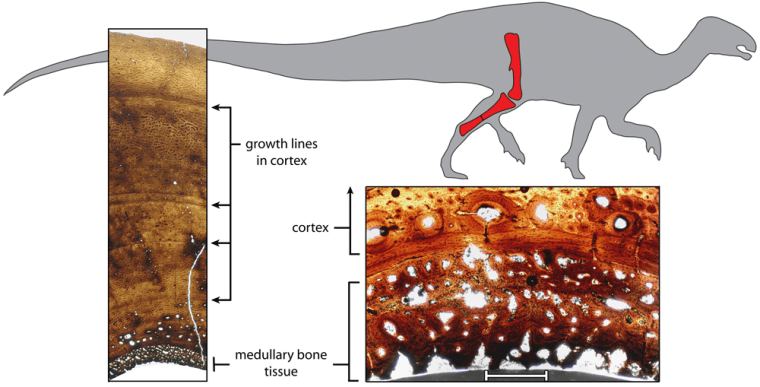Adolescent pregnancy isn't a modern invention, it occurred in dinosaurs millions of years ago.
Medullary bone, a type of tissue present in modern birds when they are developing eggs, has been found in three dinosaur fossils, researchers report in Monday's online edition of Proceedings of the National Academy of Sciences.
The dinosaurs were aged 8, 10 and 18, indicating they reached sexual maturity earlier than previously thought.
In modern birds, medullary tissue lines bones for only a few weeks when they are producing eggs and is then reabsorbed. Finding it in dinosaurs, which are believed to be the ancestors of birds, sheds light on their reproduction also.
Most dinosaurs lived to only about age 30, though some reached 60, the researchers said.
The study was done by Sarah Werning, a graduate student at the University of California, Berkeley, and Andrew Lee, also a graduate student at Berkeley when the work was done. Lee is now a postdoctoral student at the Ohio University College of Osteopathic Medicine.
"This is an exciting finding, because age at sexual maturity is related to so many things,'' the students' adviser, said Kevin Padian, a professor of integrative biology and a curator in UCBerkeley's Museum of Paleontology.
Werner said in a statement that pinpointing the age of reproductive maturity "opens up so many complementary avenues of dinosaur research. You can talk about dinosaur physiology, lifespan, reproductive strategies. And you could use this technique to look at all kinds of extinct animals.''
The medullary bones examined by Werner and Lee came from the meat-eater Allosaurus and the plant-eater Tenontosaurus. It's also been found in Tyrannosaurus rex, they said.
The research was done by the Geological Society of America, the Paleontological Society, the University of Oklahoma Graduate Student Senate, the Jurassic Foundation and U. C. Berkeley's Department of Integrative Biology.
